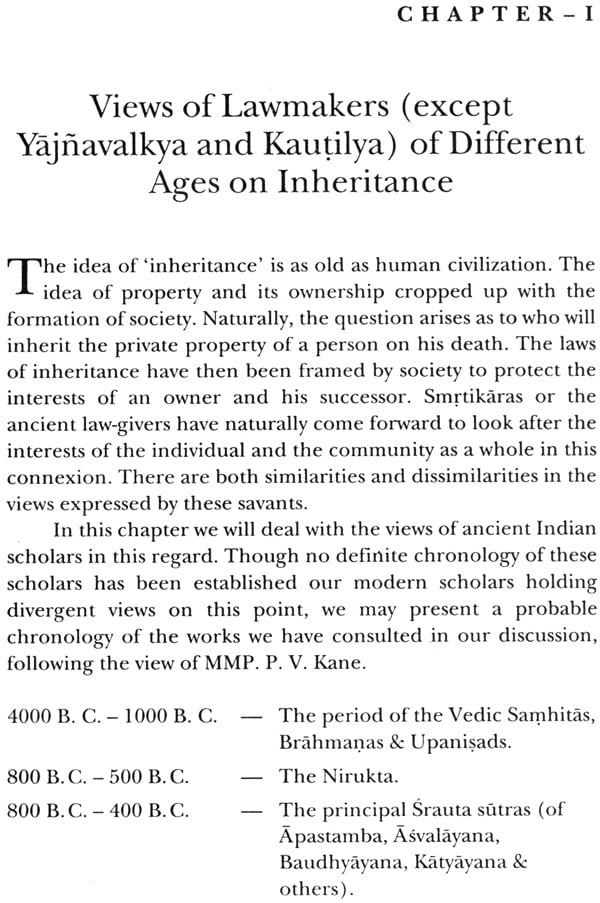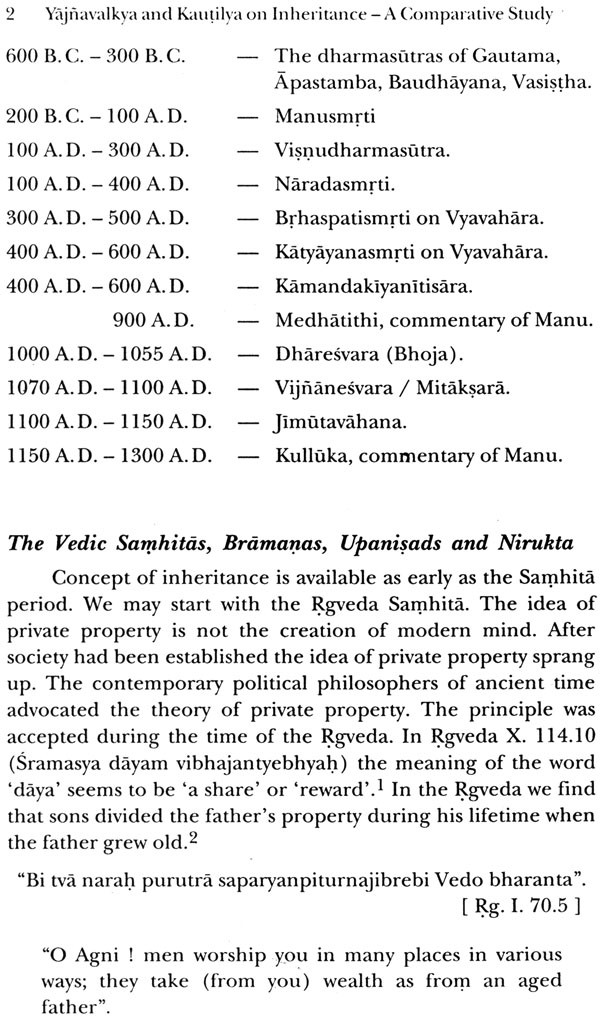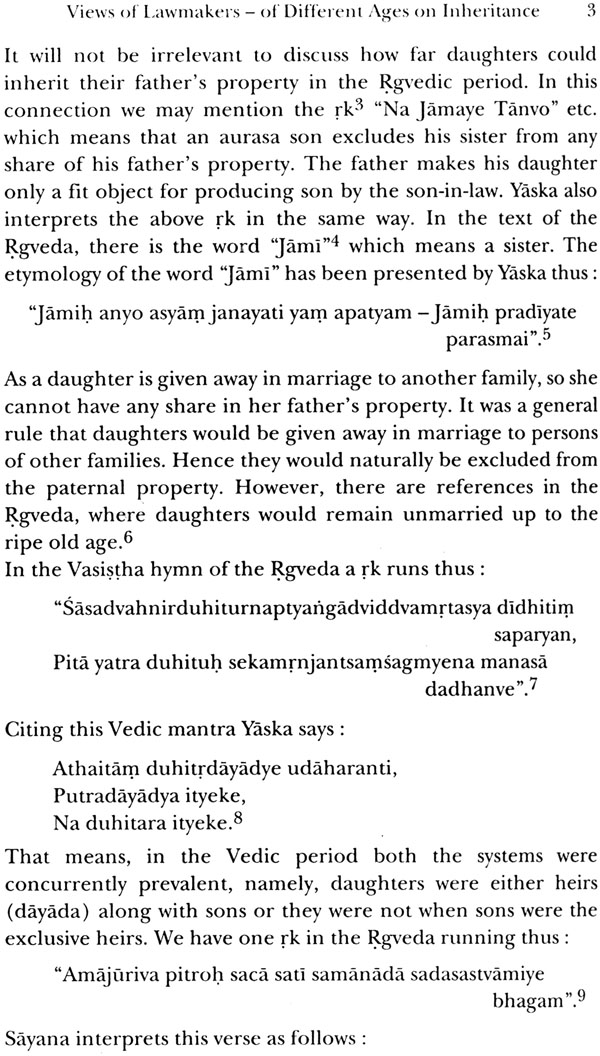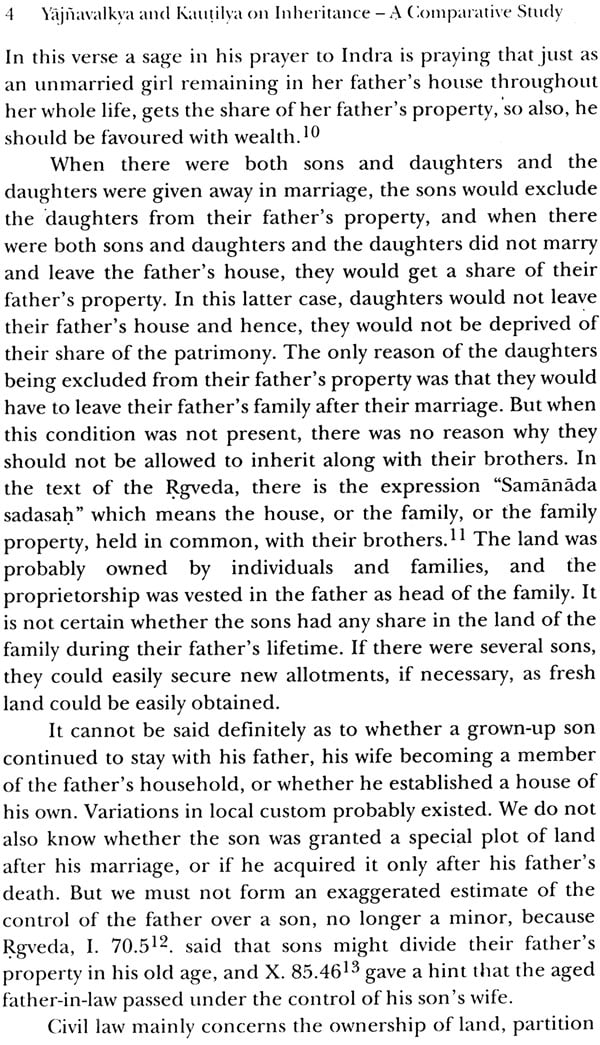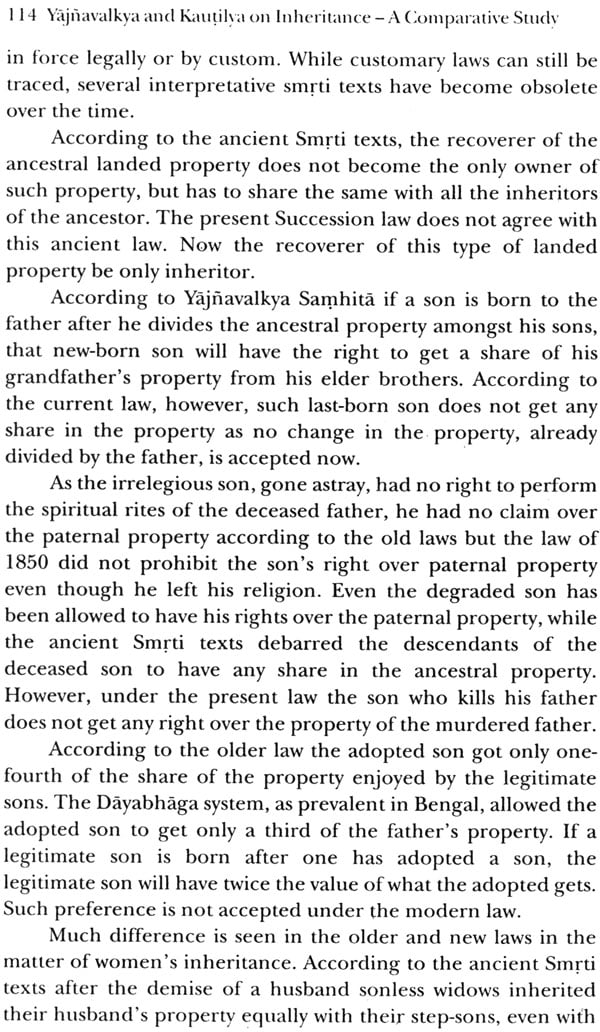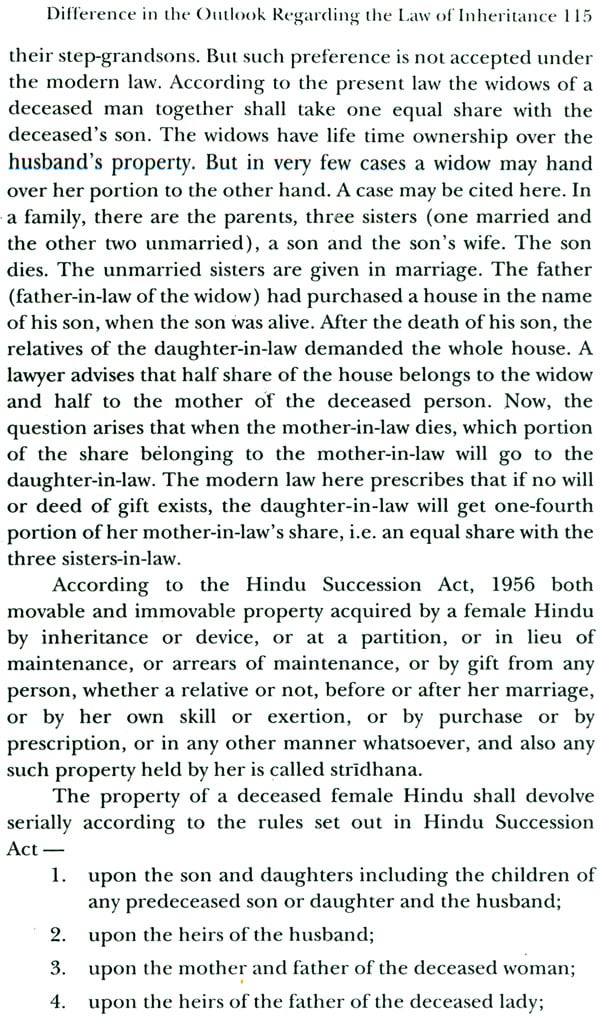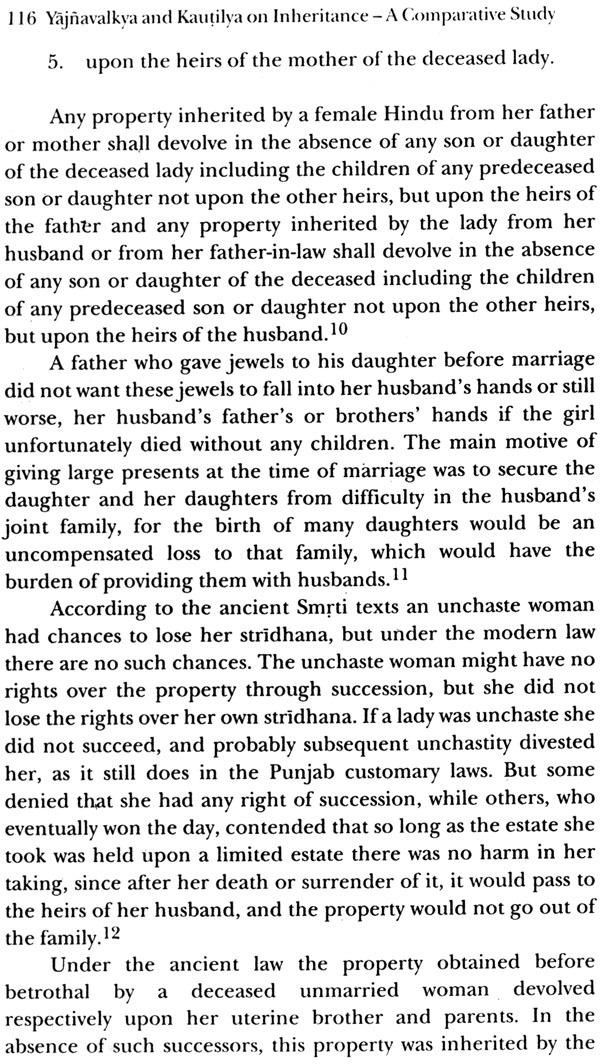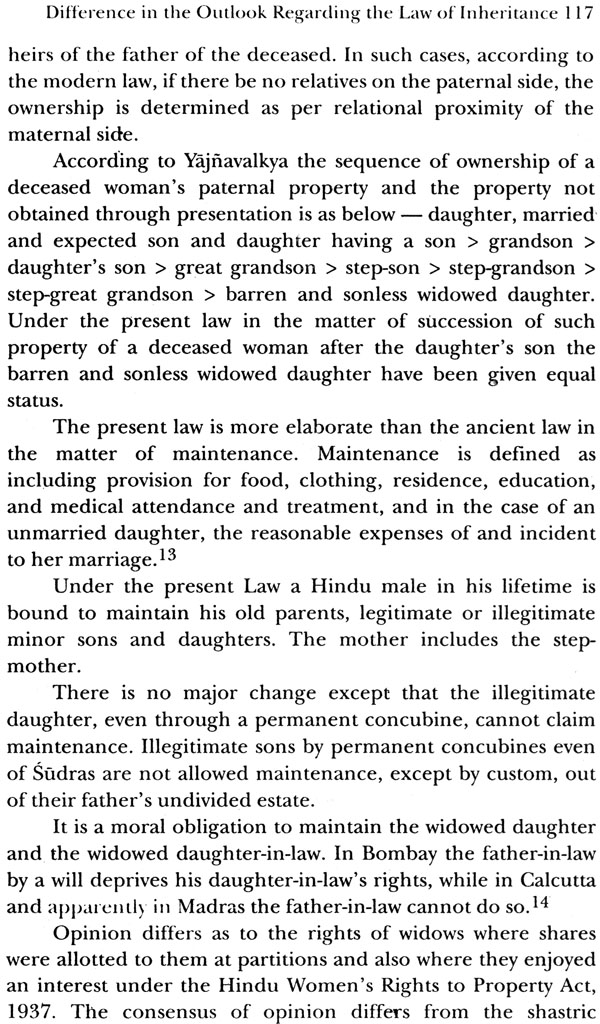
Yajnavalkya & Kautilya on Inheritance (A Comparative Study) (Transliteration Text with English Translation)
Book Specification
| Item Code: | NAG882 |
| Author: | Dr. Aparna Mukhopadhyay |
| Publisher: | Sanskrit Pustak Bhandar |
| Language: | Transliteration Text with English Translation |
| Edition: | 2013 |
| ISBN: | 9789383368426 |
| Pages: | 152 |
| Cover: | Hardcover |
| Other Details | 8.5 inch X 5.5 inch |
| Weight | 260 gm |
Book Description
The present work is my humble attempt to compile a comparative study of the ‘Yajnavalkya Samhita’ and the ‘Arthasastra’ in relation to the law of inheritance. The present work confines itself to these two school of thoughts only because they represent two distinct Branches of ancient Indian thought which manifests different aspects of a man’s journey through life and its different stages, conditions and situations. However, both have a lot in common, and there are differences too, which provides ample opportunity to explore the significant changes in social order that took place over the years of composition of these works.
This work was undertaken and carried out under the able guidance of Dr. Debarchana Sarkar, Prof. of Jadavpur University, Department of Sanskrit, I express my deepest respect and gratitude to her. I also take the opportunity to extend my sincere thanks to the Asiatic Society, Jadavpur University Central and Departmental Library, Ramkrishna Mission Institute of Culture, National Library, Sanskrit College Library for providing their valuable material support, without which this work would have remained half done. I also extend my heartfelt thanks to Professor Manabendu Bandyopadhyay and Late Dr. Herambanath Chatterjee Sastri for their immense help and support to tide over many a crisis in pursuit of the present work.
Last but not the least to mention my indebtedness to my publisher ‘Sanskrit Pustak Bhandar’ in general and Mr. Debashis Bhattacharya in particular. This piece of work would not have seen the light of day had they not painstaking by editor and put together all those pits and pieces to give it a definite form and shape.
At the end I earnestly solicit whole-hearted response, comments and criticism from my learned readers so as to enrich and enlighten me and make my maiden work worthy of rending for the generations to come.
Inheritance’ as defined in modern judicial lexicon is a sort of a legal and fictitious continuation of the personality of the dead man whom the present successor represents. The dead man who can no longer own or exercise his rights in propria persona, can now do so through the person of a living substitute. Thus, it is said, that the legal personality of a man survives his natural personality till his obligations are properly performed and his property is duly disposed of-and then only his representation among the living is no longer called for.
Inheritance is also considered to be a spiritual bargain inasmuch as the right to succeed to another depends on the successor’s capacity for benefiting the dead person by the offering of funeral oblation (Sraddha).
The idea of continuity of spiritual heritage is age-old in India and it is best explained through the concept of Dharma. The word Dharma (from dhr, to hold) stands for what is firm and durable and signifies the external laws which maintain the world. Manu also says:
Srutistu vedo vijneyo Dharmasastrantu vai Smrtih
Te sarbarthesvamimamsye tabhyam dharmo hi nirvabhau
Thus Dharma meaning ‘duty’ practically expresses confomity-with what a Hindu considers as the natural order of things, and this explains its association with law as enunciated in the Dharmasastras. The Dharrnasastras were, however not “Codes” in the European sense of that word, but their precepts did not thereby lack a certain authority in the eyes of the Hindus, specially because of their origin, but also, and particularly in the judge’s eyes, because they were the only ones which were the fruits of a profound study offering some framework of juridical reasoning. The written law of the sastras and the customary laws of the different groups of humanity thus existed side by side, equally respected though often in notable disagreement with each other. The former acted upon the latter and restricted its mobility; but the latter also acted upon the latter and restricted its mobility; but the latter also acted upon the former through the medium of interpretation. In either case the preliminary labour done by interpretation pioneered the road and prepared the passage from dharma to law.
The meaning of “Law” as found in the dictionary is a ‘body of enacted or customary rules recognized by a community as binding.”
K. Roy analyses the different stages through which the Dharma-sutras came into being: “The original vedic literature developed in three different periods in three different types. Thus the early Samhita period in which the Vedas themselves were written in followed by the Brahmanic period. Then come the sutra period in which many sutra literatures attached to the different vedas were compiled. The sutra literature reveals four stages of its development. At first there were Srauta-sutras. Side by side with the Srauta-sutras were written the Grhya sutras dealing with domestic ceremonies (Grhya sutras of Aswalayana, Manu, Baudhayana). Next come the Dharma sutras of the several vedas dealing with socio-legal topics. Lastly, at a late period various digests and commentaries attached to the several Dharma sutras were written. Dharmasutras served as the rudimentary manuals of both secular and religious law.”
S. K. Chatterjee observes, “We are not definite as to when exactly the Dharmasastras began to be composed for the first time. Yaska’s reference in the Nirukta (III. 4.8-10) to earlier controversies about the legal issue of inheritance and his reliance on a verse called sloka as distinguished from a rk, gives us the clue to the pre-existence of works dealing with the content of dharma in the sloka metre. Patanjali (2nd century B.C.) recognizes the authority of the Dharma-sutras as next to the commandment of God. All this establishes beyond doubt the existence of the literary tradition of the Dharmasastras even before 600 B.c.” Dasgupta and .De have also guessed that Dharmasastras were probably in existence before Yaska. The important Dharmasastras of Gautama, Baudhayana and Apastamba probably flourished between 600 and 300 B.C. But most of the smrtis other than the older ones were written during the period AD. 400 to AD. 1000. The Yajnavalkyasmrti was probably composed in the 3rd or 4th century A.D. R. K. Mookerji holds that Dharrnasutra and Dharmasastra were the works on law which treated more of religious duties and rites than secular law. Law in general was treated in later works known as the metrical Dharmasastras and Smrtis like Manava-dharmasastra known for the commentary written on it by Medhatithi and Dharma-sastra of Yajnavalkya (C. AD. 300) with its famous commentary called Mitaksara written by Vijnanesvara (AD. 1050-1100).
| Preface | (vii) | |
| Introduction | (ix) | |
| Chapter-I | Views of Lawmakers (Except Yajnavalkya and Kautilya) of Different Ages on Inheritance. | Jan-42 |
| Chapter-II | Law of Inheritance According to Kautilya’s Arthasastra. | 43-70 |
| Chapter-III | Law ofInheritance According to Yajnavalkya | 71-85 |
| Chapter-IV | Comparative Study of Kautilya And Yajnavalkya’s View On The Law of Inheritance. | 86-107 |
| Chapter-V | Difference in the Outlook regarding The Law of Inheritance Between The Ancient And Modern Lawmakers. | 108-120 |
| Bibliography | 121-126 |
